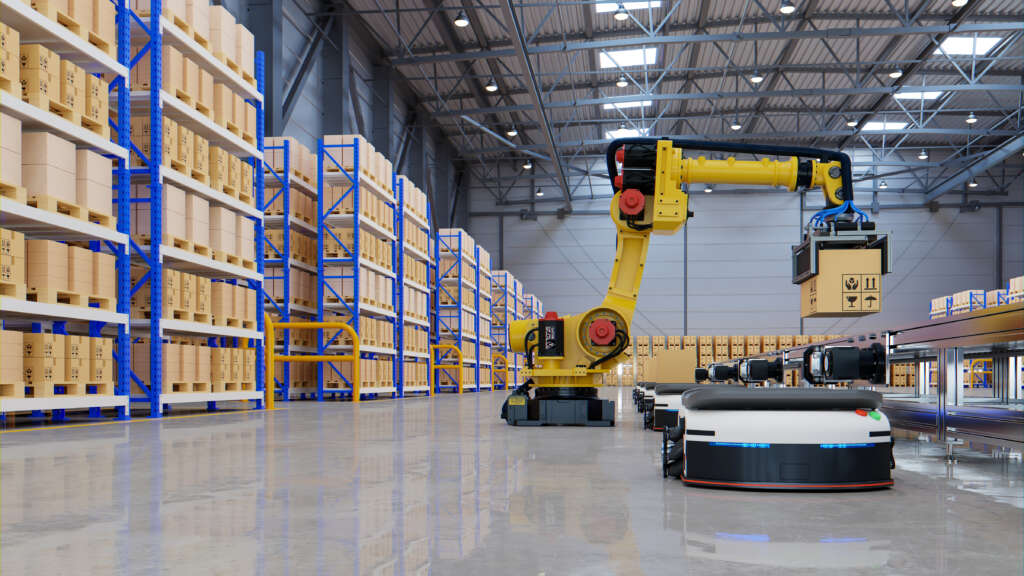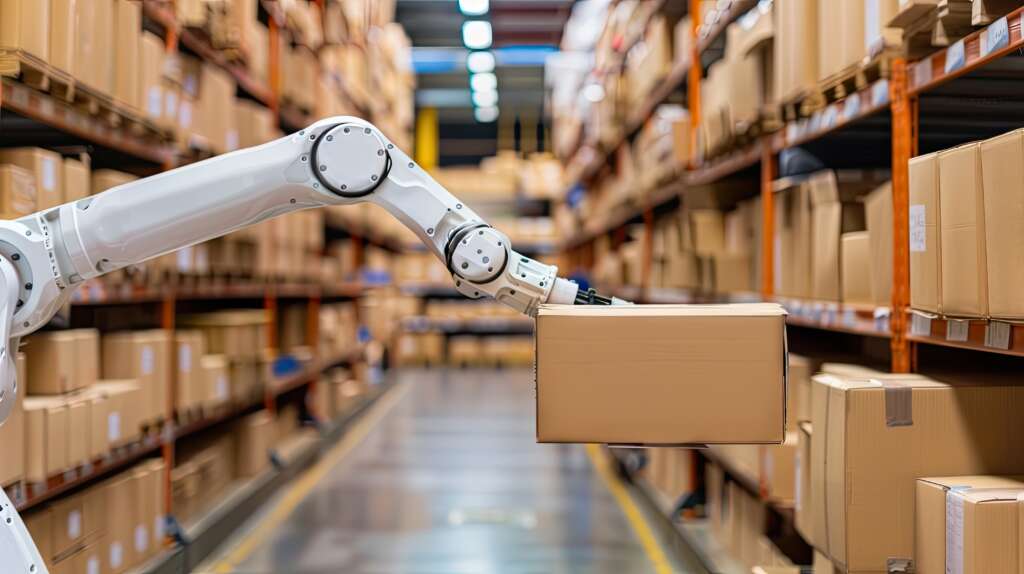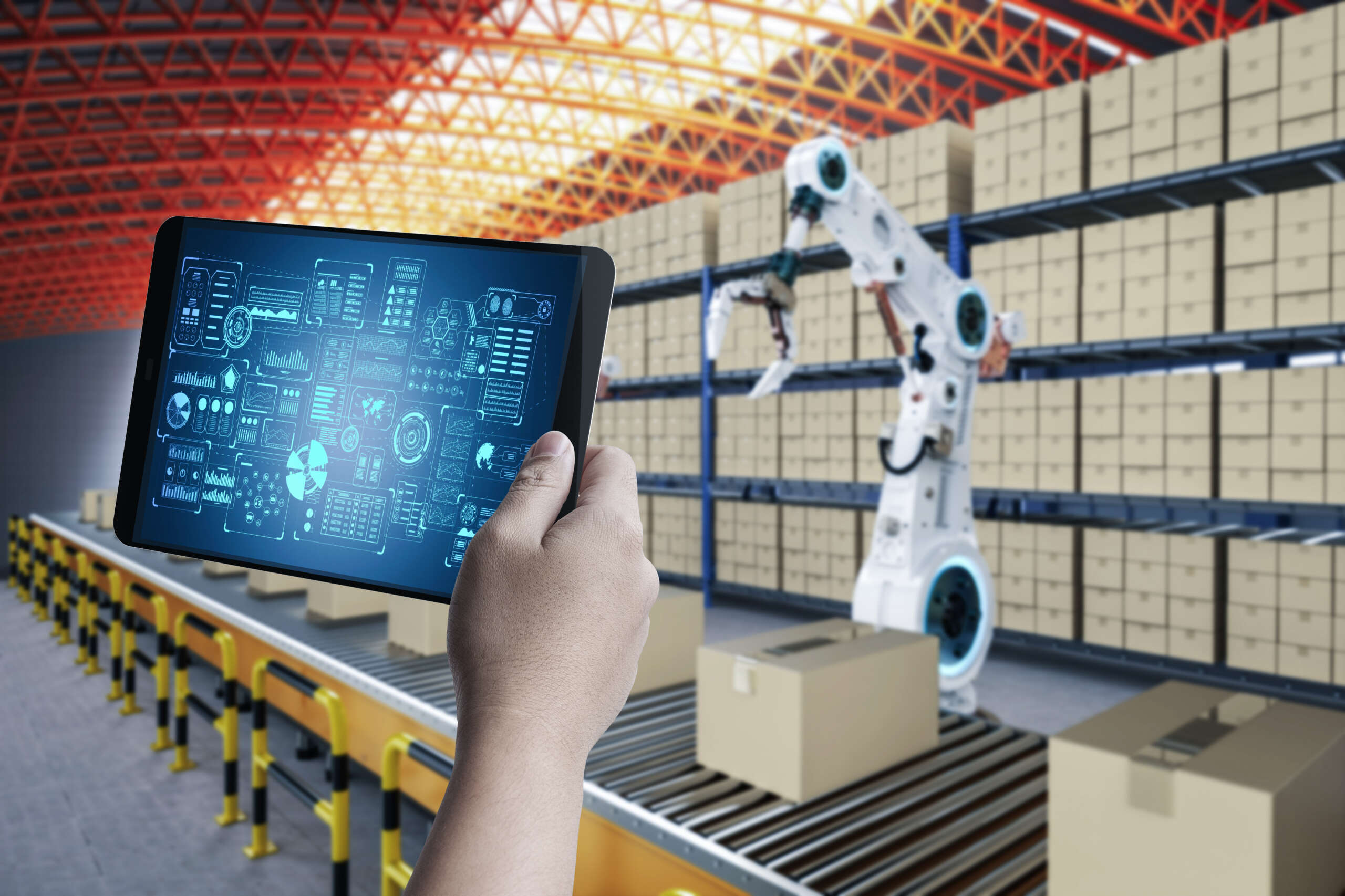Imagine a world where every stock decision is a step ahead of demand, where excess inventory or stockouts are relics of a bygone era. In the not-so-distant past, managing inventory was a constant challenge. It was guided more by instinct and experience than data. Today, revolutionizing stock optimization with AI is a reality for businesses focused on innovation and efficiency.
A recent survey found that 94% of SMB Shopify merchants plan to use artificial intelligence in their business by 2024. 30% are focusing on new automation technologies and AI. As companies adapt to a changing market, AI-driven inventory solutions are becoming key to staying competitive.
However, businesses face challenges with AI, like the cost of implementing it and ensuring data quality for accurate forecasting. Despite these challenges, the benefits are clear. With AI techniques like machine learning, businesses can now predict sales and manage inventory better. This shows AI is changing how companies handle their stock.
Are you ready for AI to change your inventory management? Learn how this technology is essential for businesses to succeed in 2024 and beyond.
Revolutionizing Operations: The Role of AI in Inventory Management
The use of AI in supply chain inventory has started a new chapter in how businesses run. Now, companies are using AI to improve their inventory management. This has made it easier to understand, react to, and predict market needs better than before.
This technology change is not just about making stock levels better with AI. It’s changing the way inventory is managed from the start.

Using inventory optimization with AI brings many big benefits. Companies like Amazon and Walmart have gotten much better at predicting what customers will want. This helps avoid running out of stock or having too much stock.
This balance is key for keeping costs down and making customers happy. Customers can find what they need without waiting.
AI also gives businesses real-time updates on their inventory. This makes inventory systems more dynamic than just numbers on a page. AI helps companies quickly adapt to changes in demand or supply chain problems.
This leads to a more reliable supply chain. AI also cuts down on mistakes made by people, making things more dependable.
Using AI in inventory management also saves money. AI helps manage stock levels based on things like the time of year and how suppliers do. This reduces costs and waste.
This not only saves money but also helps the environment. It’s part of a global effort to be more eco-friendly.
With AI, businesses can make their inventory management better than ever. They can meet and beat today’s logistical challenges.
Adding AI to inventory management is a big step forward. It helps businesses deal with today’s complex markets and what customers expect. This technology lets companies keep the right amount of stock. They can meet their customers’ needs well and efficiently.
Future developments in AI-driven inventory solutions will bring even more advanced features. This will change how businesses handle their key assets even more.
Dissecting the AI Spectrum: Types and Capabilities in Inventory Optimization
The world of managing inventory now uses many types of artificial intelligence (AI). This includes machine learning and natural language processing. Each plays a key role in inventory optimization with AI. With more data to handle, AI tools like deep learning and named entity recognition (NER) are vital. They make managing inventory more efficient and accurate by predicting demand and managing stock levels.

AI is changing how we handle AI-enhanced inventory systems. Machine learning is key in looking at past data, spotting trends, and helping make decisions. This is vital for knowing what customers want and for using resources well. It helps businesses change quickly and accurately with the market.
AI also helps with advanced ways to sort inventory, like the ABC method. This method sorts items by value and how often they’re used. With AI, companies can better track inventory, predict trends, and act fast.
AI does more than just predict; it uses semantic search and sentiment analysis to understand lots of data. This turns complex data into useful information. It helps improve how inventory is managed, making businesses more sustainable and keeping customers happy.
As AI grows, it’s becoming a key part of managing inventory. It brings new levels of efficiency and accuracy. AI-enhanced inventory systems are now crucial for businesses wanting to succeed in a tough market.
AI in Inventory Management: Advancing Retail, Manufacturing, and Logistics
AI is changing how we manage inventory in retail, manufacturing, and logistics. It’s not just a trend; it’s a big change towards better, more efficient ways to manage things. AI helps by doing tasks that take a lot of data and giving insights we couldn’t get before.
For retailers, AI makes managing inventory easier by predicting what customers will buy. It uses AI algorithms to look at past data and current market trends. This means retailers can keep just the right amount of stock, cutting down on waste and making customers happier.
In manufacturing, AI changes how supply chains work by giving real-time updates and automating buying. AI systems adjust when to order more and how much to keep in stock based on the latest data. This means manufacturers keep the perfect amount of inventory, saving money and keeping production smooth. AI makes manufacturing more efficient and helps them bounce back from supply chain problems.
Logistics companies get a big boost from AI by making routes better and deliveries faster. AI can look at lots of data at once, leading to smarter decisions and better supply chain management. This means customers get their items quicker and it costs less to run the business, making customers happier and service better.
These changes show how important AI is for managing inventory. By using AI, companies are not just keeping up; they’re setting new standards for doing things better and more efficiently. The future of managing inventory is here, thanks to AI-driven innovations that make businesses smarter, more responsive, and more sustainable.
Industry Insights: AI-Driven Inventory Solutions and Business Outcomes
Businesses are turning to Artificial Intelligence (AI) to make managing stock more efficient and cost-effective. Using AI to manage stock helps businesses run better and boosts profits. For example, companies like Amazon and Walmart use AI to keep track of stock in real time. This leads to better customer service and lower costs.

The benefits of AI in inventory management are huge, affecting many sectors like manufacturing and construction. In manufacturing, AI looks at past data to guess what stock will be needed next. This means materials arrive just in time, cutting costs and making production smoother. In construction, AI helps plan schedules and use resources well, which is key for finishing projects on time and keeping costs down.
AI can predict what stock is needed and manage it well, cutting down on waste and avoiding last-minute buys. This helps with managing stock and is good for the planet by reducing the need for extra production and storage.
AI also changes how employees work. It takes over simple tasks, letting workers focus on bigger challenges. This makes employees happier and lowers mistakes in managing stock. It helps create a workforce that can keep up with new tech and improve business processes.
But, using AI in managing stock has its downsides too. There are worries about data privacy, making it work with other systems, and the high cost to start. Companies need to think about these things to make sure AI helps their business in the long run.
Putting money into AI for managing stock and operations shows a forward-thinking approach. It can lead to big gains in efficiency, cutting costs, and making customers happier. This can give a business a strong edge in today’s fast-moving market.
AI Techniques: The Engines Driving Predictive Analytics and Inventory Forecasting
The use of predictive analytics in inventory management is changing how companies predict demand and manage stock. By using advanced AI, like machine learning, companies can avoid the problems of having too much or too little stock. This leads to better cost control and happier customers. AI also uses past data and complex algorithms to accurately predict what customers will want in the future.
AI helps businesses quickly analyze huge amounts of data, including sales trends and inventory levels. This makes decision-making and planning better. For example, AI-driven analytics software tracks items in different places and predicts demand changes. This helps companies make timely stock adjustments, keeping their supply chain strong.
AI also makes working with suppliers better. By using AI in e-procurement systems, companies can manage their inventory better. This leads to lower costs, less waste, and supports sustainability in industries like food and beverage where products have a short life.
Predictive analytics in inventory management, powered by advanced AI, gives a deeper insight into market demands and operational challenges. As AI gets better, it makes inventory management more efficient. It helps businesses work better and align with customer needs like never before.
Ecommerce Tailwinds: How AI is Shaping Inventory Management in 2024
In 2024, the world of ecommerce AI inventory management is changing a lot. AI is leading these changes. It’s happening because businesses need to keep up with the fast-changing online market. Now, AI is key to making things run better and making customers happy.
The year 2024 is big for 2024 trends in AI for inventory. We’re seeing a big move towards automated, predictive, and adaptive systems. These AI systems do more than just track stock. They predict trends, understand what customers want, and even handle supplier relationships. AI can look at a lot of data and find important information. This helps retailers not just meet current demands but also guess what customers will want next.
AI is also changing the back end of ecommerce sites, which is a big deal in AI transforming ecommerce operations. It automates stock updates, uses real-time data from different places, and gives detailed analytics. This means businesses can make quick, smart choices, cut down on mistakes, and save money. This makes them more profitable and improves the shopping experience, making everything smoother from checking stock to delivering orders.
Companies using AI for managing inventory will get better at being efficient and innovative. As ecommerce grows, those with advanced AI will likely lead the way. They’ll set new standards for managing inventory that others will want to follow.
AI is becoming a key part of ecommerce. It’s changing how companies handle inventory to meet the market’s fast-changing needs and what customers expect.
This mix of AI and ecommerce starts a new chapter. It combines technology with everyday business needs. This leads to a smarter, more responsive retail world.
Implementing AI in Inventory Management: Challenges, Considerations, and Opportunities
Business owners are turning to artificial intelligence to improve their operations. Integrating AI in inventory systems brings its own set of challenges. One big issue is making sure the data is good quality. If the data is bad or old, AI won’t work well.
Starting to use AI can be expensive, especially for small businesses. But, cloud-based AI alternatives are making it easier to find a good balance between cost and what you get.
Finding the right people to work on AI is hard. As AI gets more complex, so does the need for skilled workers. Challenges of AI in inventory management also include following the rules and keeping data safe. Hiring experts is crucial for success.
Despite the challenges, the benefits of using AI in inventory management are huge. It can save money, make customers happier, and reduce the risk of running out of stock. The market for AI in inventory management is growing fast.
Retail, e-commerce, and logistics are set to gain the most from AI. It makes predicting demand better and helps track inventory in real-time. AI also helps with setting prices, keeping equipment running smoothly, and managing risks in the supply chain.
Embracing AI is about more than solving problems. It’s about using new tools to stay ahead, improve supply chains, and keep customers coming back.



